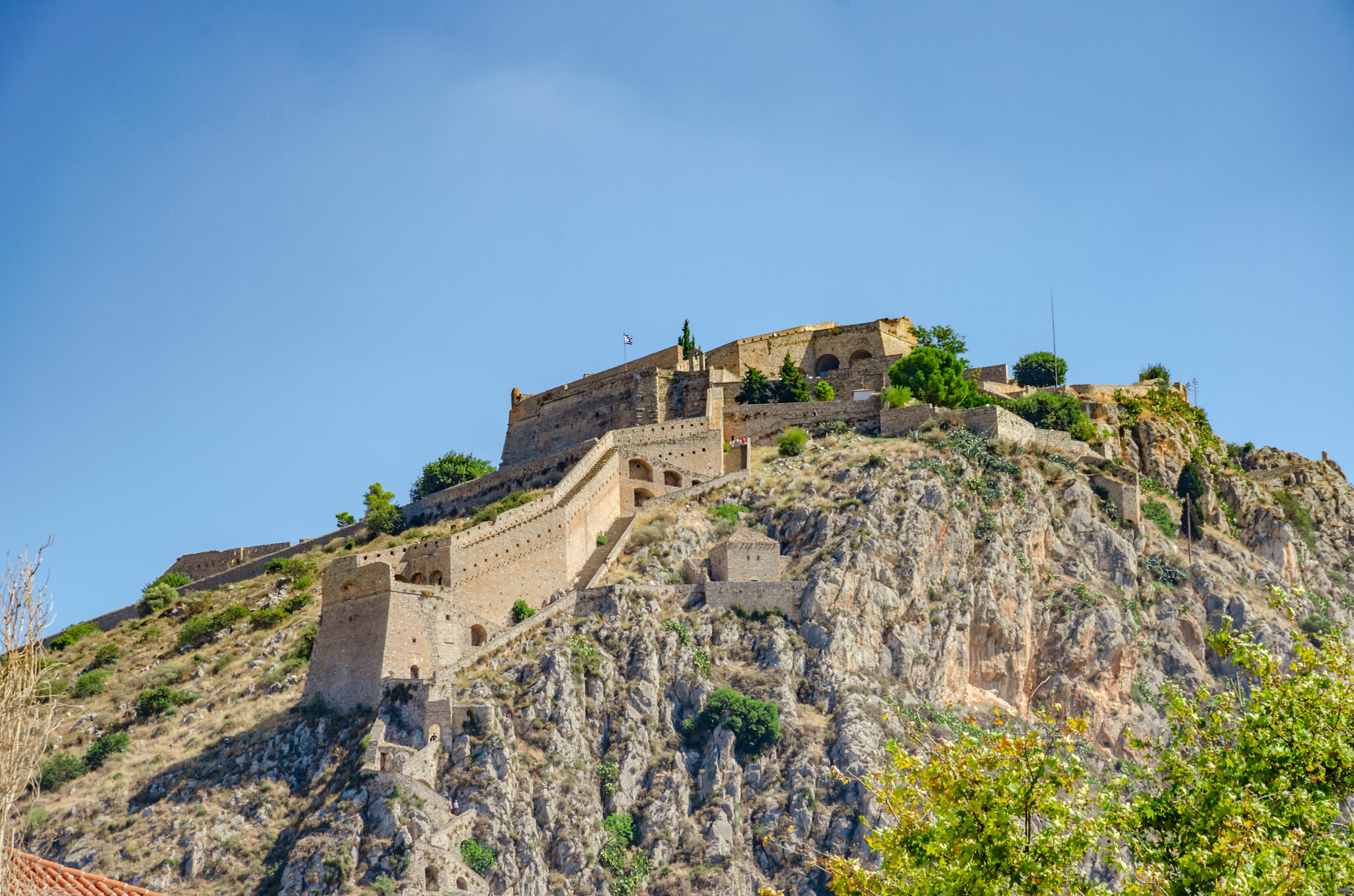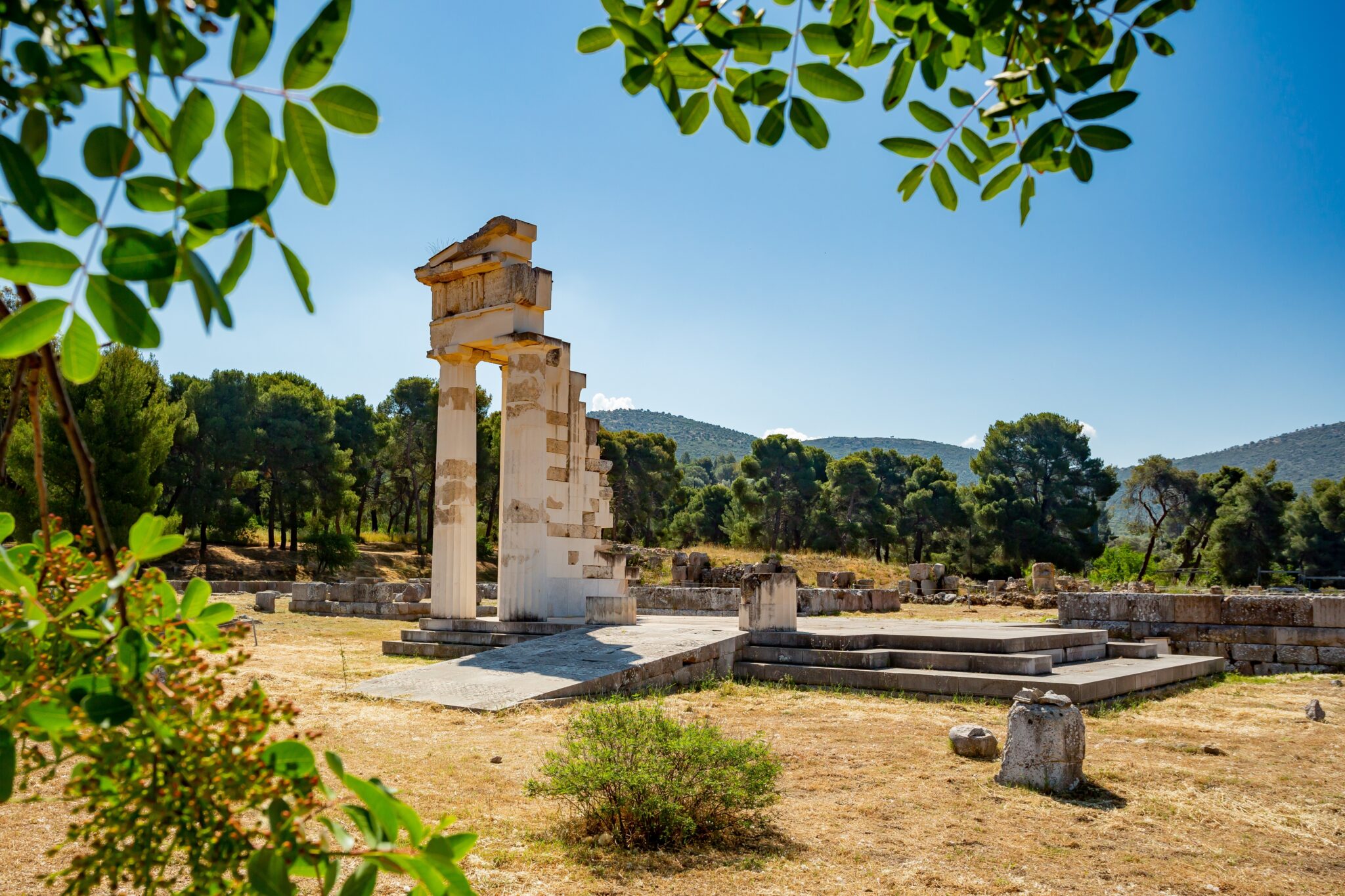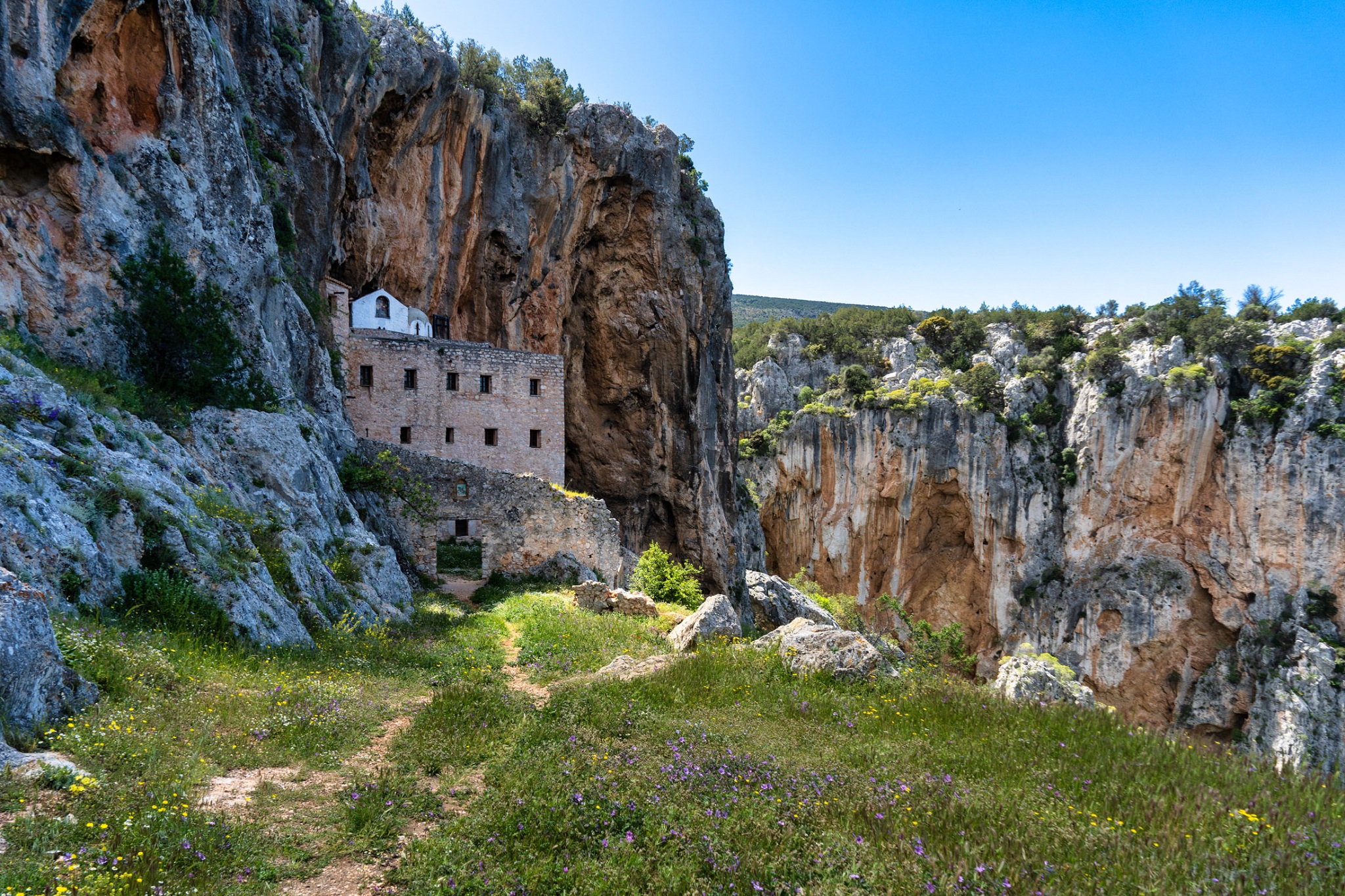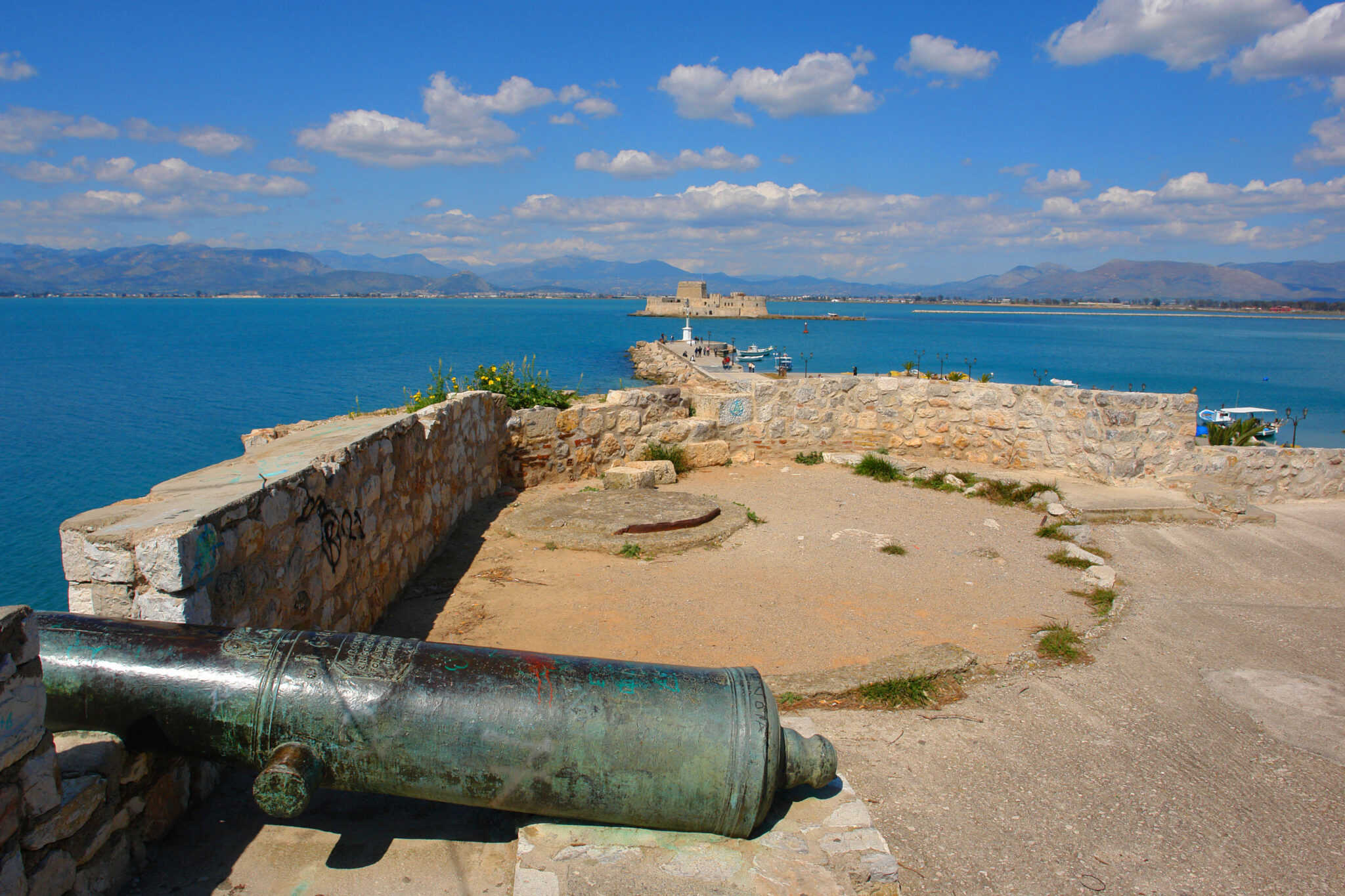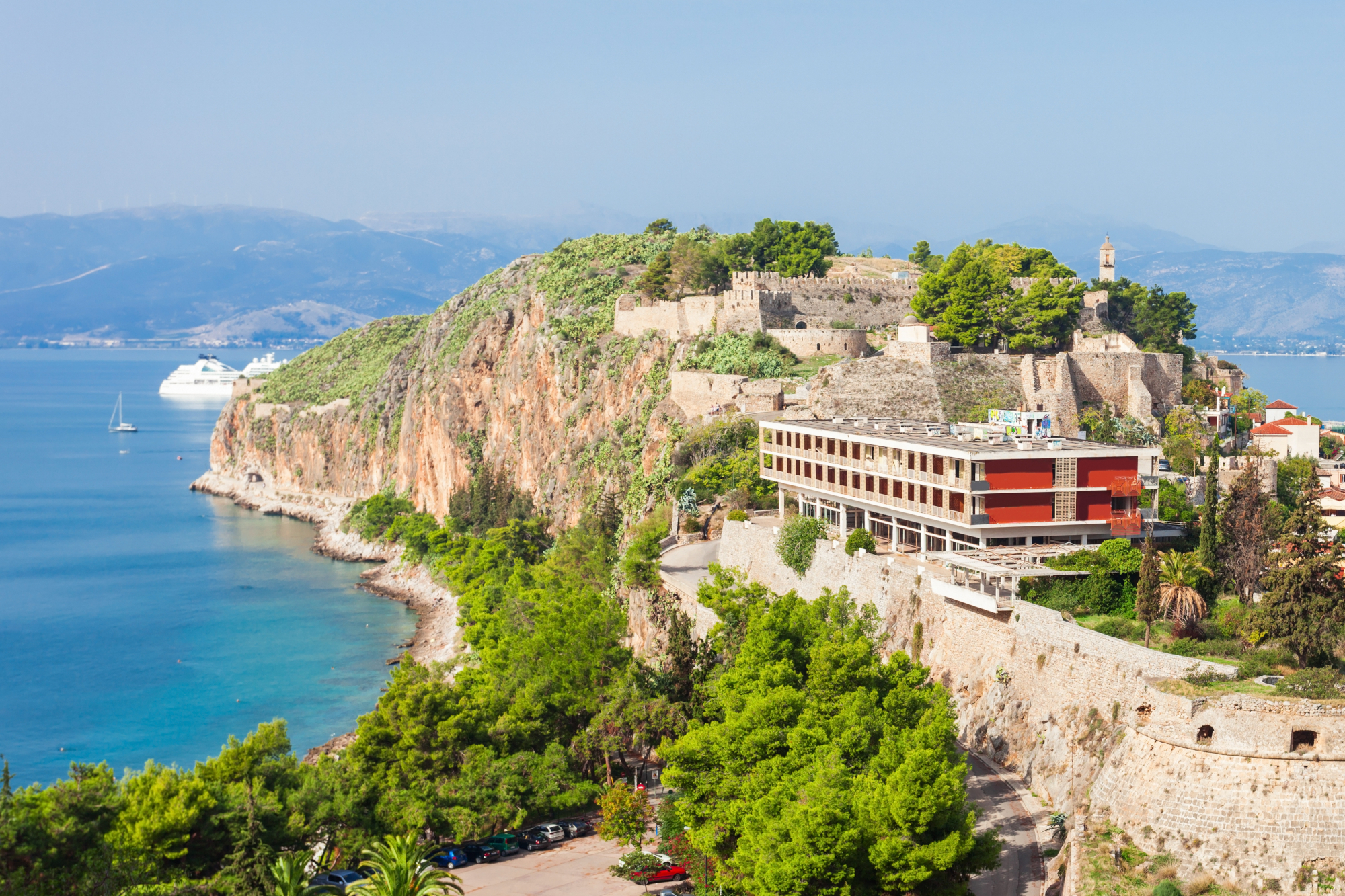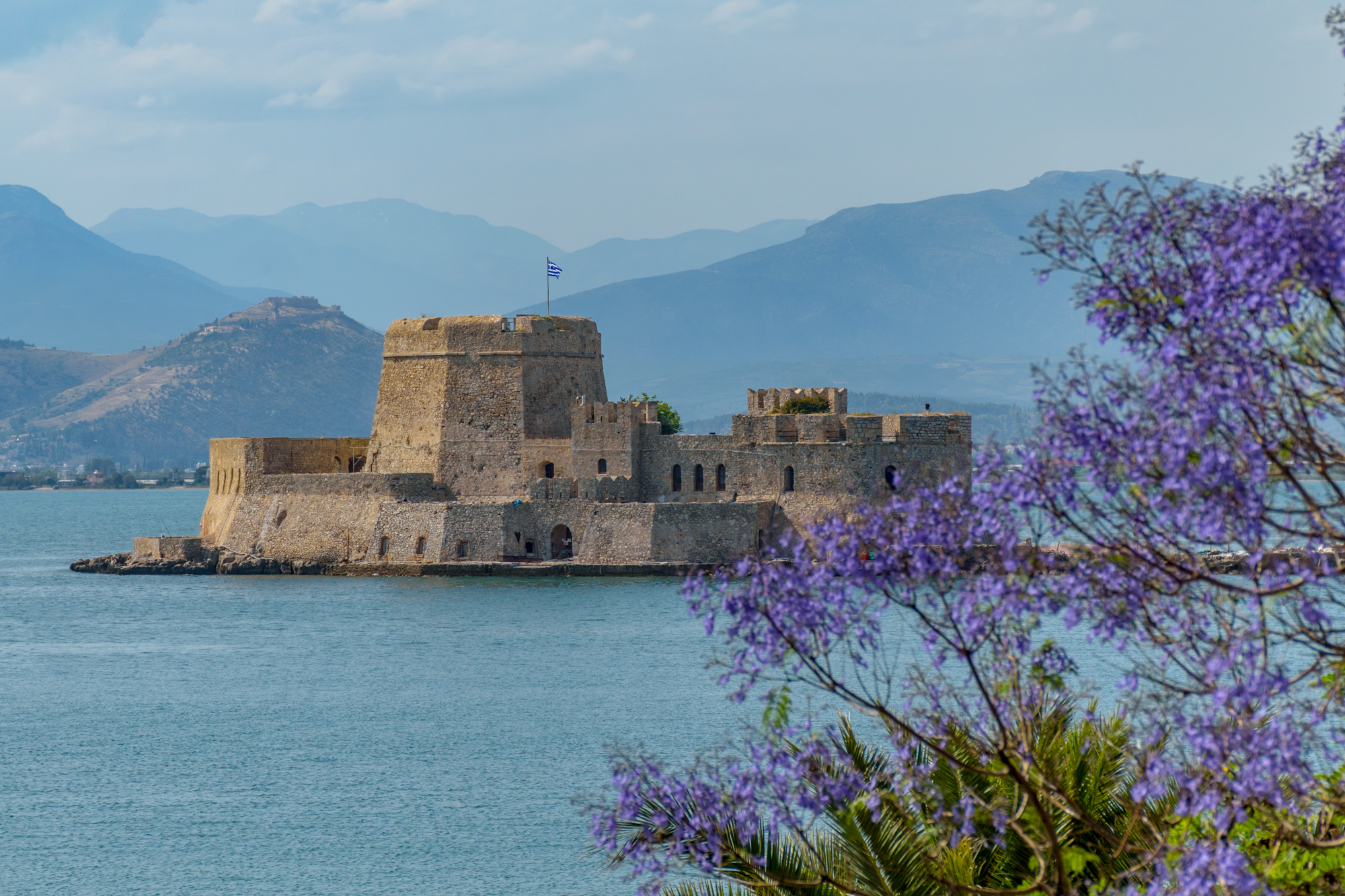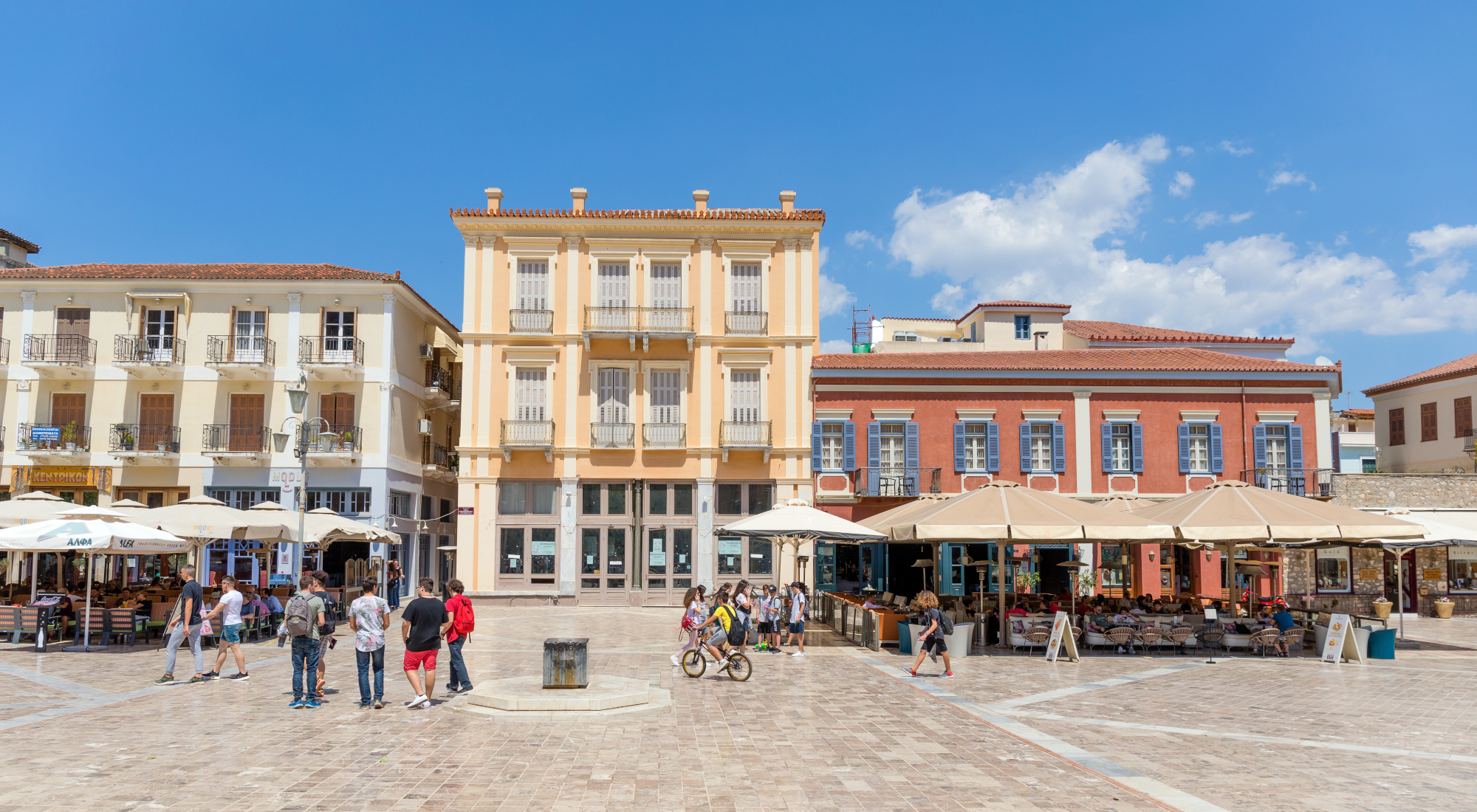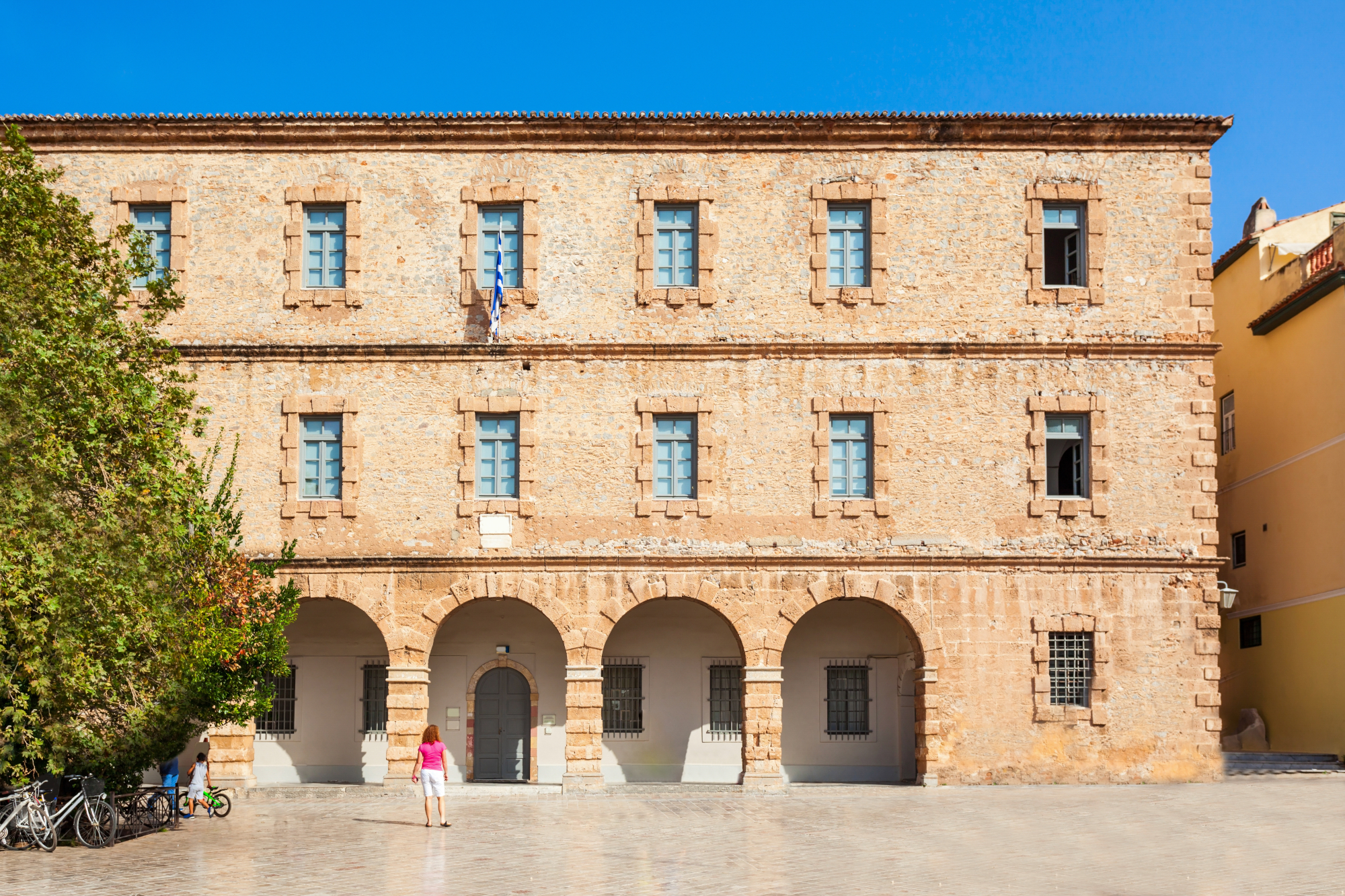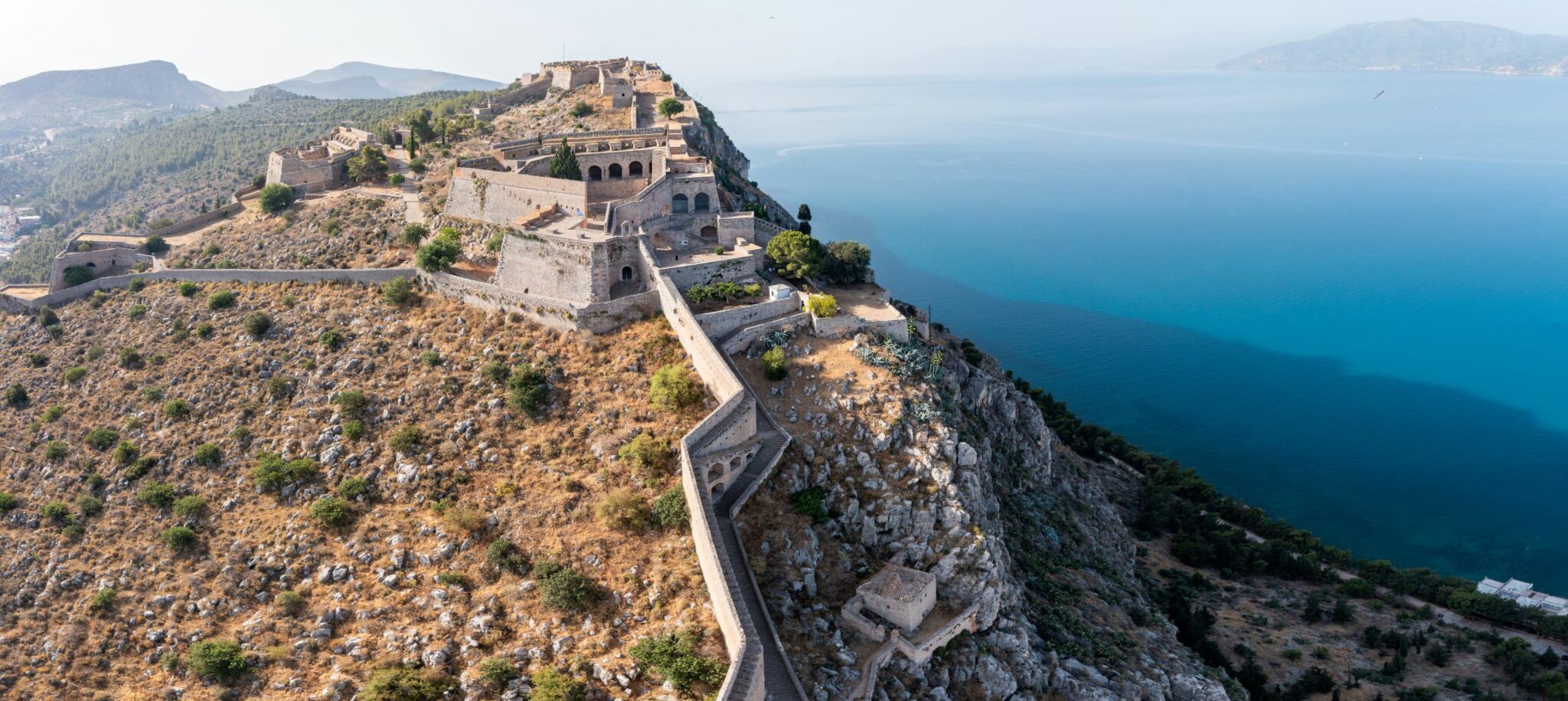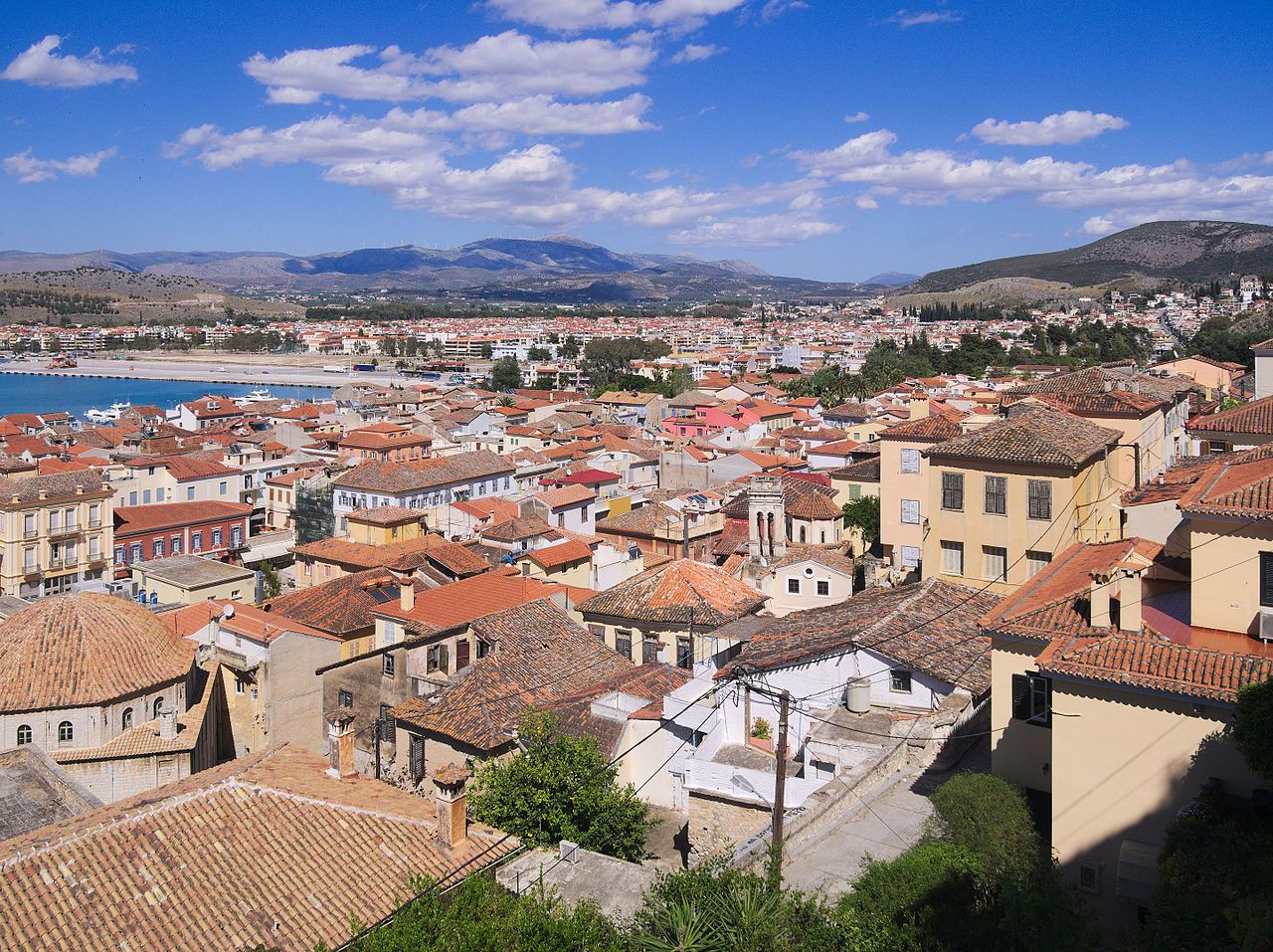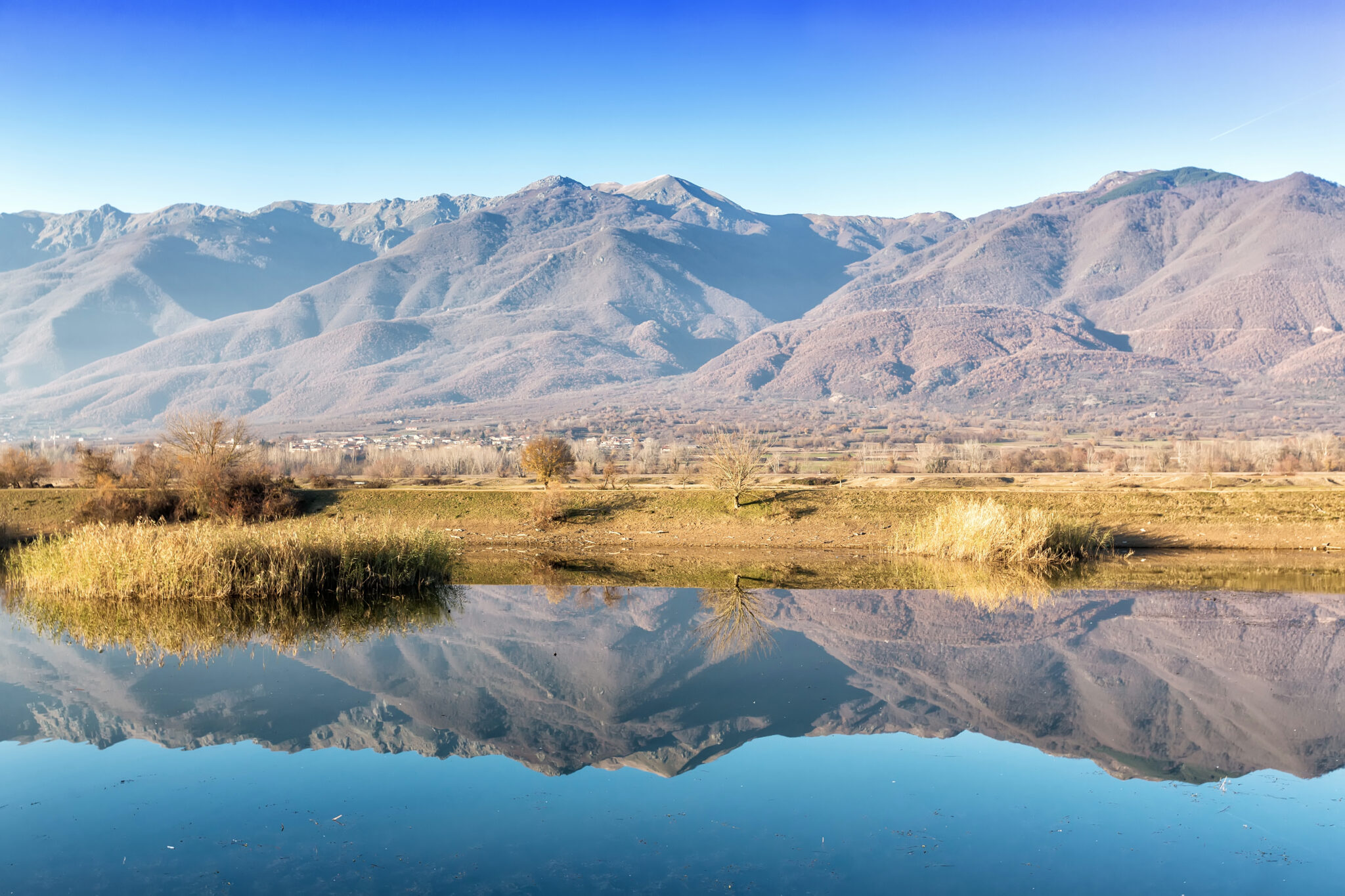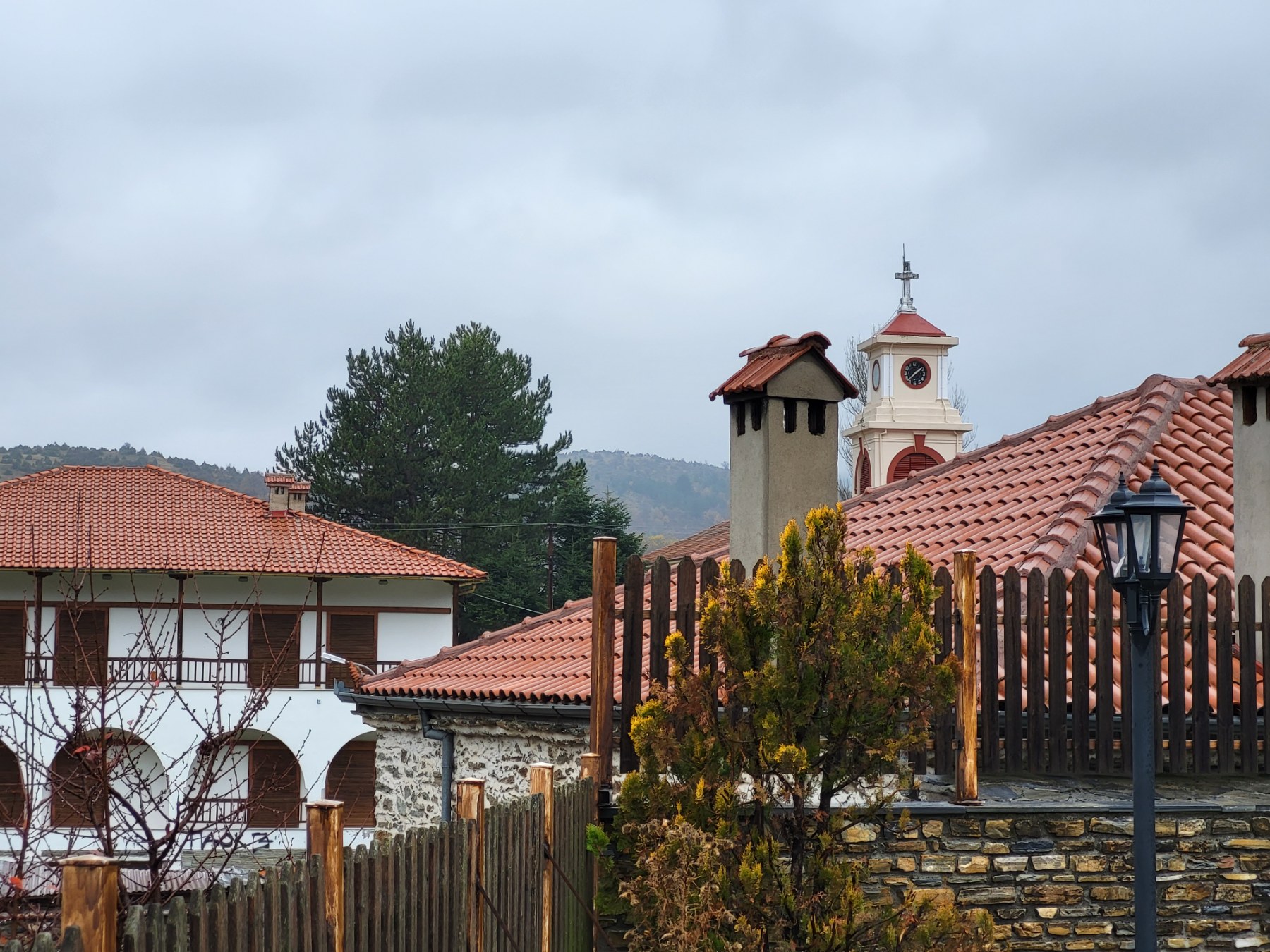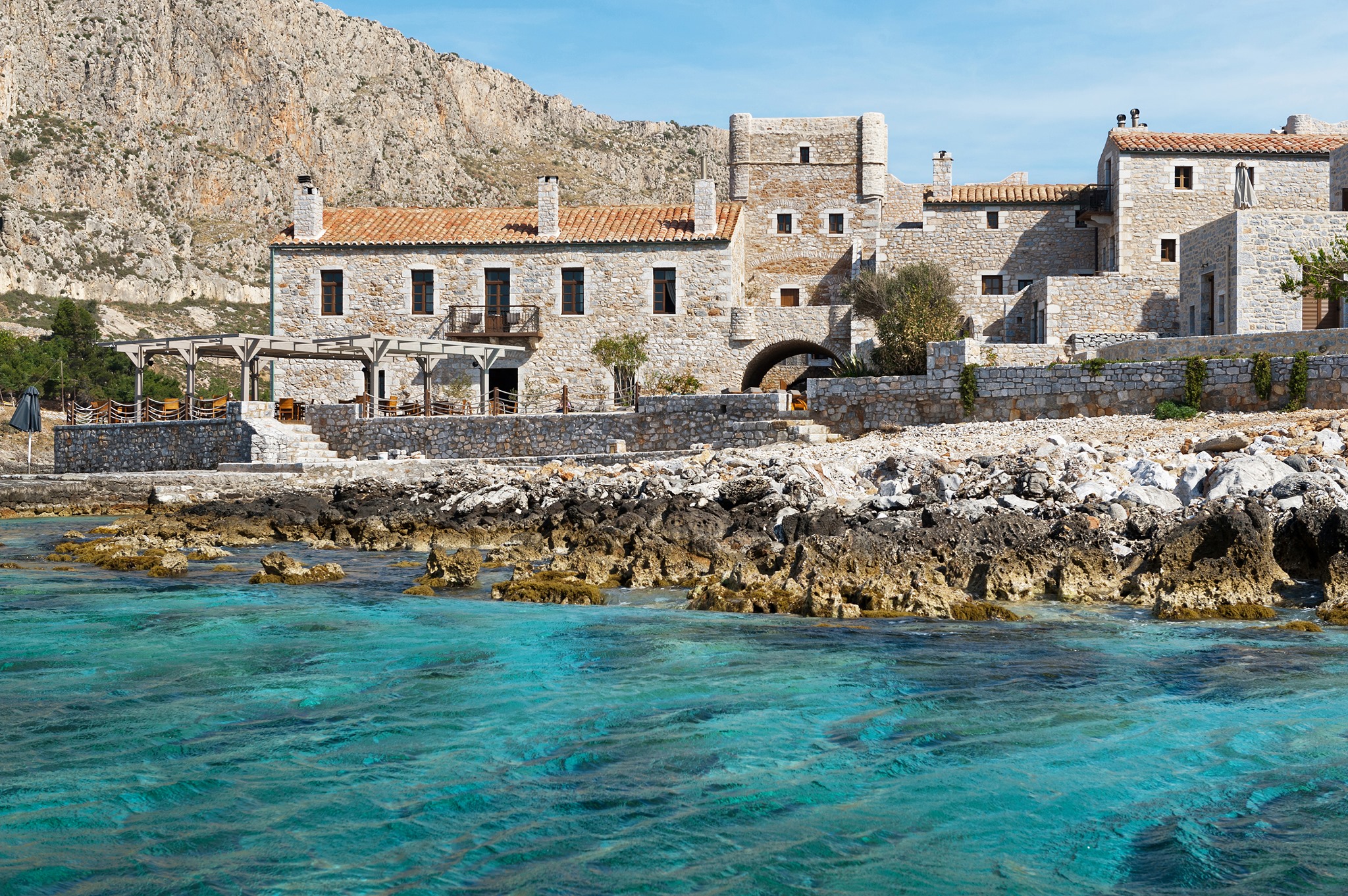Viewed from the mighty Palamidi, Nafplio oozes charm; tiled rooves and handsome stone buildings spread out to the Acronafplia peninsula, with the fortress of Bourtzi standing sentry in the deep blue Argolic Gulf.
Rich in tumultuous history, the city has been prized by invaders for millennia, keen to take advantage of its strategic position and the wealth of the surrounding region. A prominent protagonist in the birth of modern Greece, the Ottoman, Venetian and neoclassical buildings around Syntagma Square, including the first parliament, speak of a fascinating narrative. Walk through the 300 year old Porta dela Terraferma, the only entrance to Nafplio in Venetian times, and step into a city of adventures and fortunes, a city of romance and of intrigue.
Five Brothers
Above the harbour on the northwestern edge of Acronafplia are the ruins of a fortification known as the Five brothers. The only remaining segment of the lower wall built in 1502, the name refers to the five cannons placed here by the Venetians at the end of the 17th century. Manufactured by Almercetti, they bear the winged lion of St. Mark, the symbol of Venice.
An iron chain connected the fortress with Bourtzi creating the Porto di Cadena, the chain harbour, so that invaders could not attack the city from the sea.
Vouleftiko
The Vouleftiko, parliament building, on the southwest side of Syntagma Square, has a special place in Greek history as it was here that the Greek National Assembly held its first meetings in 1825. A former mosque, it is built of dressed grey stone in 1730 and it has a square chamber with a large domed roof. Legend attests that the lintel stone from the Tomb of Agamemnon at Mycenae was used in its construction. Another story relates that it was built by a Turkish Aga in penance for the murder of two young men who had a treasure map. Used as a school, then as a prison, it held the trial of Kolokotronis and Plapoutas when they opposed the rule of King Otto, and today it is used as a conference centre with the Municipal Gallery of Nafplio occupying the ground floor.
Acronafplia
Acronafplia is the finger-like promontory that stretches into the sea south of the harbour. Steeply cliffed, the heights are crowned with a series of castles; a Frankish one to the east, a Byzantine one to the west, and the Castello di Toro to the northwest built by the Venetians around 1470. During the second Venetian occupation the gates were strengthened and the giant Grimani bastion was added in 1706 below the Toro. Accessed by an elevator next to the Nafplia Palace Hotel or from Potamianou Street where a flight of stairs ascends from Agios Spyridon Square, the views are faultless – on one side is the old city with terracotta rooves, church bell towers and Bourtzi standing guard in the harbour, and to the other a forest of prickly pears, sheer rocks and the deep blue waters of the Argolic Gulf.
Arvanitia Promenade
A kilometre long seaside walk skirts the Nafplio peninsula and offers terrific views of the three fortresses of Acronafplia, Bourtzi, and Palamidi. Paved with flagstones, the path leads to Arvanitia beach, a popular place for a swim. Passing under carved arches and with steps down to the sea every now and then, the path continues for a further 4 kilometres to the sands of Karathona beach, passing stretches of rocky shoreline along the way.
Bourtzi
Nafplio’s pint-sized protector is a well loved presence on the islet of Agios Theodoros in the middle of the town harbour. A single tower was built in 1471 by Antonio Gambello, an architect from Bergamo, and the Venetians enlarged it with a second tower and bastion when they recaptured Nafplio in 1686. Initially known as the Castello dello Soglio, castle of the throne, the name that prevailed is Bourtzi, which in Turkish means tower.
During the War of Independence in 1822, Greek freedom fighters captured Bourtzi and bombarded the Turkish defences. Later, it served as a prison for Kolokotronis, and, after 1865, it housed the town executioners. Recent years saw it function as a luxury hotel, but it is now undergoing renovation. Excursion boats make the 10 minute passage from Nafplio, and in summer it hosts a summer festival of musical and cultural events.
Catholic Church of the Metamorphosis tou Sotiros
Converted to a mosque under Ottoman occupation, King Otto gifted this 13th century church to Nafplio’s catholics. Also known as Frankoklisia, Frank church, as it served as a convent when Nafplio was under Frankish rule, the church is best known for its wooden portico. Inscribed with the names of philhellenes who lost their lives during the War of Independence, the church commemorates the metamorphosis of Greece after its liberation from Turkish oppression.
Nafplion Archaeological Museum
On a handsome red stone building on Syntagma Square, an inlaid marble inscription tells that the three-storey edifice was built in 1713 by the prefect of the fleet, Augustine Sagredo, to be used as a naval warehouse during the second Venetian occupation. The museum houses artefacts from the nearby sites of Mycenae, Tiryns, Asine and Dendra, and the exhibits from the Mycenean tombs are particularly rich with a remarkable bronze suit of armour from the 15th century BC on display. Nafplion Archaeological Museum (Tel.: 27520 27502, www.odysseus.culture.gr, closed Tuesdays, €6)
Old Mosque
On the southwest corner of Syntagma Square, the Old Mosque has had many incarnations since Nafplio was liberated from Turkish rule. It has been a school, a courthouse, municipal offices, and a movie theatre where it got its most common name among locals, Trianon. Today, it houses the Municipal Theatre and is one of the oldest surviving examples of Ottoman architecture in the city.
Palamidi
An architectural wonder, the fortress of Palamidi dominates the Naplio skyline, with a series of walls, stone bastions and flights of steps that zigzag down the 200 metre tall cliffs. Approachable by car at the east gate, there are also a series of steps. Traditionally said to be 999 in number, with the 1,000th being smashed by war hero Kolokotronis’ horse, the reward for the steep climb are magnificent views across the town to the Argolid Gulf, the Argive plain and the Arcadian mountain ranges opposite.
Built in 1711-14, Palamidi consists of eight bastions, self-contained so that if one was breached the others could still be defended. The Venetians named the bastions after Greek heroes such as Achilles, Leonidas and Themistocles to emphasis their strength. Unfortunately, they over estimated the impregnability of the fortress and, after only an eight day siege, the castle fell to the Ottoman forces in 1715. Captured in 1822 as part of the Greek War of Independence, Palamidi was converted into a fearsome prison that housed Kolokotronis and other revolutionary leaders on charges of high treason. Palamidi (Tel.; 27520 28036, €8)
Agios Spyridon Church
A single-aisle basilica with a dome, the church was built in 1702, and would not have much to single it out except for the remarkable events of September 27th 1831. In its doorway, the first head of the newly independent Greek state, Ioannis Kapodistrias, was assassinated by the Mavromichalis brothers from the Mani in a long-running vendetta. A glass display case next to the portal shows where the fatal bullet wedged into the church wall.
Psaromachalas
The fisherman’s quarter is a small district of narrow lanes above Staikopolous Street at the northwestern foot of Acronafplia. Already a settlement at the end of the 13th century, it was inhabited by merchants and fishermen who moored their boats below the cliffs of the Five Brothers hence the name meaning fishmonger. During the Ottoman occupation it was the only neighbourhood within the city walls to continue to be lived in by Greeks and Agia Sophia was the sole church to be allowed to hold Orthodox services.
Today, it is a charming area of small houses painted in salmon pinks, deep reds, dusty yellows and dark greens. Architecturally diverse, many of the old buildings have been converted into pensions and it is an especially evocative place to spend the night.
Church of Panagia
One of the oldest and best loved churches in Nafplio sits between two cafés behind the Archaeological Museum. An older church from the 15th century was rebuilt in a post-Byzantine three aisle style and it has an elaborate carved wooden reredos. Associated with the martyrdom of St Anastasios, the patron city of the city, who was killed on 1st February 1655 for his faith by the Turks, a procession of his icon is carried through the streets every year on the same day. Allegedly the saint was hung from the ancient olive tree that grows next to the church, the tree has never since borne fruit.
Read also:
7 reasons why Nafplio is always a great idea
Road Trip to Legendary Mycenae and Nafplio the First Capital of Greece
Nafplio, Pelion, Monemvasia: Spring driving in three of Greece’s loveliest areas



